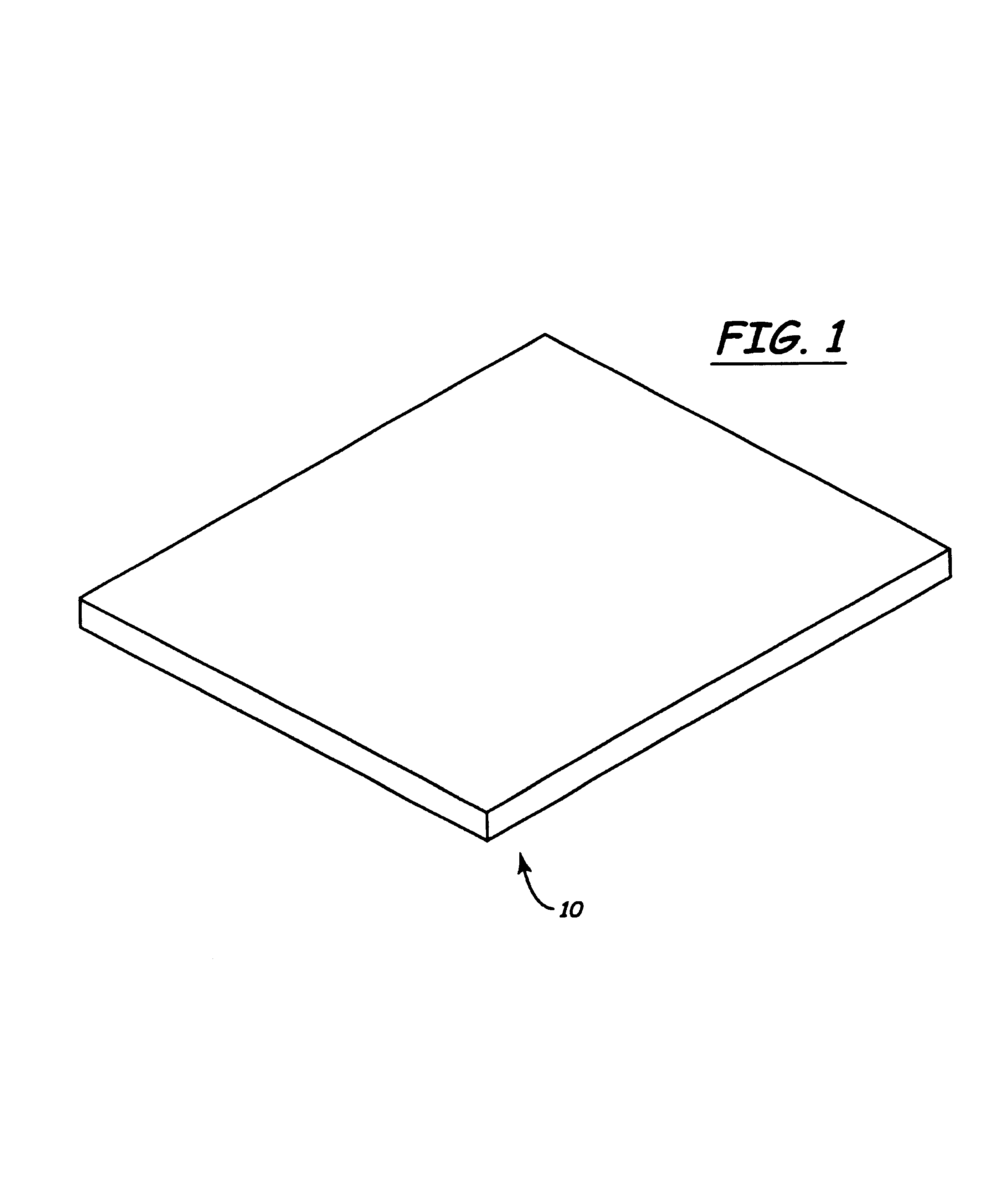Monolithic part and process for making the same
a monolithic part and process technology, applied in the field of products making processes, can solve the problems of easy predictable repeatability, etc., and achieve the effects of less weight, thinner walls, and strong and weight advantages
- Summary
- Abstract
- Description
- Claims
- Application Information
AI Technical Summary
Benefits of technology
Problems solved by technology
Method used
Image
Examples
Embodiment Construction
[0037]The accompanying Figures and this description depict and describe embodiments of a process or method and a product or products produced thereby in accordance with the present invention, and features, steps and components thereof. As used herein, the term “monolithic” is intended to mean comprising a substantially single unit which, in some embodiments, may be a single piece formed, composed or created without joints or seams and comprising a substantially, but not necessarily rigid, uniform whole. In some embodiments, the monolithic product of the process of the present invention may be undifferentiated, i.e., formed of a single material, and it may comprise integral structures or features such as a substantially continuous skin having an outer surface or side and an inner surface or side, and integral support members such as ribs or thickened portions comprising frame members on the inside surface of the skin. As used herein, the term “machine” (including machining, machined,...
PUM
| Property | Measurement | Unit |
|---|---|---|
| shape | aaaaa | aaaaa |
| residual stress | aaaaa | aaaaa |
| structures | aaaaa | aaaaa |
Abstract
Description
Claims
Application Information
 Login to View More
Login to View More - R&D
- Intellectual Property
- Life Sciences
- Materials
- Tech Scout
- Unparalleled Data Quality
- Higher Quality Content
- 60% Fewer Hallucinations
Browse by: Latest US Patents, China's latest patents, Technical Efficacy Thesaurus, Application Domain, Technology Topic, Popular Technical Reports.
© 2025 PatSnap. All rights reserved.Legal|Privacy policy|Modern Slavery Act Transparency Statement|Sitemap|About US| Contact US: help@patsnap.com



